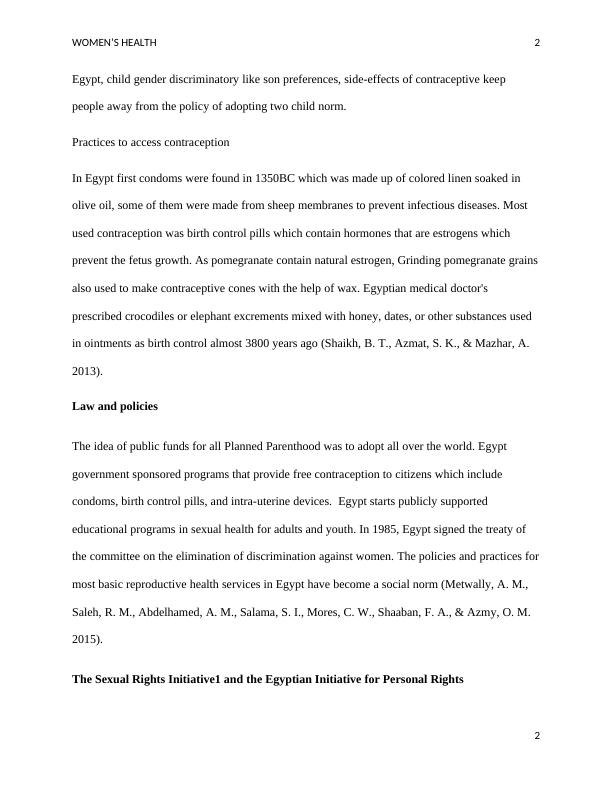Ask a question from expert
Women's Health Education: Practices, Laws, and Effects on Health
6 Pages1417 Words129 Views
Added on 2019-09-21
About This Document
This article discusses women's health education in Egypt, including access to contraception and family planning. It explores the laws and policies surrounding abortion and the effects of unsafe abortions on women's health.
Women's Health Education: Practices, Laws, and Effects on Health
Added on 2019-09-21
BookmarkShareRelated Documents
End of preview
Want to access all the pages? Upload your documents or become a member.
Women’s Health in Egypt: Contraception, Fertility, and Government Policies.
|6
|1521
|430
Importance of Sexual Health Education in Egypt
|6
|1405
|152
Effects of Birth Control Methods on Birth Rate and Maternal Health
|9
|2275
|72
Male Contraception: A Review of Current Methods and Developments
|13
|3625
|389
Teenage Pregnancy - Public Health Challenges
|4
|748
|18
Contraceptive Use Among Nigerian Women With no Fertility Intention
|9
|3333
|71


